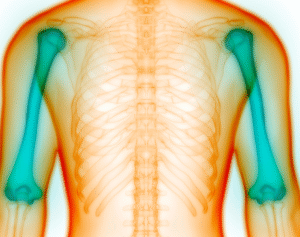Discovering the Early Clues: What Are Usually the First Signs of Fibromyalgia?
Recognizing the First Signs of Fibromyalgia
Fibromyalgia is a chronic and often misunderstood condition that affects millions of people worldwide. It is known for causing widespread pain, fatigue, and a host of other symptoms that can dramatically alter a person’s quality of life. While it can take years to receive a proper diagnosis, recognizing the early signs can make a significant difference in managing the condition and improving long-term outcomes. Understanding what are usually the first signs of fibromyalgia helps individuals seek help sooner and start appropriate treatments earlier.
Persistent Widespread Pain
One of the most common and earliest signs of fibromyalgia is persistent, widespread pain. Unlike localized pain that may come from an injury or inflammation, this pain typically affects both sides of the body and occurs both above and below the waist. It often starts gradually and worsens over time, moving through various muscle groups, sometimes without a clear cause. Patients often describe the pain as deep, throbbing, aching, or stabbing.
Unrelenting Fatigue
Fatigue that does not improve with rest is another initial symptom. This is not ordinary tiredness but an overwhelming sense of exhaustion that interferes with daily tasks. People often wake up feeling unrefreshed despite getting sufficient sleep. This fatigue can persist throughout the day and is often disproportionate to physical or mental exertion.
Cognitive Difficulties or “Fibro Fog”
Many individuals with fibromyalgia report problems with concentration, memory, and mental clarity, commonly referred to as “fibro fog.” This cognitive cloudiness can be one of the earliest and most frustrating symptoms. It may manifest as forgetfulness, difficulty finding words, or trouble multitasking, often mistaken for stress or aging.
Sleep Disturbances
People experiencing the early stages of fibromyalgia frequently struggle with sleep. Even though they may spend enough time in bed, the quality of sleep is often poor. They may have difficulty falling asleep, wake up frequently, or feel as if they never enter deep sleep. This lack of restorative sleep contributes to fatigue and exacerbates other symptoms.
Headaches and Migraines
Frequent tension-type headaches or migraines can appear in the early phases of fibromyalgia. These headaches may stem from muscle tightness in the neck and shoulders or changes in pain sensitivity. For some, headaches are severe and recurrent enough to interfere with daily life and productivity.
Sensitivity to Stimuli
Heightened sensitivity to light, sound, odors, and even touch is another hallmark sign. What may seem like a minor annoyance to others can be intensely uncomfortable to someone developing fibromyalgia. This increased sensitivity is tied to the way the nervous system processes sensory information.
Digestive Issues
Some people experience gastrointestinal disturbances such as bloating, constipation, irritable bowel syndrome, or abdominal pain in the early stages of fibromyalgia. These symptoms may be misattributed to diet or stress but are common in fibromyalgia patients.
Mood Fluctuations and Emotional Symptoms
Mood disorders such as anxiety and depression can accompany or even precede the physical symptoms of fibromyalgia. These emotional disturbances may result from the body’s long-term struggle with pain and sleep issues or may be part of the syndrome’s neurological makeup. It’s not uncommon for people to seek treatment for depression before discovering their fibromyalgia diagnosis.
Numbness and Tingling
Another less obvious early sign is numbness or tingling in the hands and feet. This sensation, often described as pins and needles, may come and go and is usually not linked to any obvious cause. While it can be mistaken for circulatory issues or neuropathy, it is also associated with fibromyalgia.
Jaw Pain and Temporomandibular Joint Dysfunction (TMJ)
Pain in the jaw or around the temporomandibular joint is another initial symptom that some individuals experience. TMJ-related symptoms can include clicking sounds when opening the mouth, pain while chewing, or general tenderness in the jaw area.
Why Early Detection Matters
Catching fibromyalgia in its early stages is important because it allows individuals to begin managing their symptoms before they become overwhelming. Early intervention with physical therapy, lifestyle adjustments, cognitive behavioral therapy, and medications can slow progression and improve quality of life.
Conclusion
Understanding what are usually the first signs of fibromyalgia empowers individuals to take action early. While the symptoms may seem vague or overlap with other conditions, a pattern of persistent pain, fatigue, cognitive challenges, and sleep disturbances can signal the onset of fibromyalgia. Consulting a healthcare provider and tracking symptoms diligently can lead to timely diagnosis and better outcomes.
Frequently Asked Questions
1. What is the earliest age fibromyalgia can start?
Fibromyalgia can begin at any age but most commonly appears in individuals between 30 and 50 years old. However, it can also occur in children and adolescents.
2. Can fibromyalgia symptoms come and go?
Yes, fibromyalgia symptoms can fluctuate in intensity and frequency. Some people experience flare-ups followed by periods of relative relief.
3. How is fibromyalgia diagnosed?
Diagnosis is typically based on a combination of symptoms, medical history, and the exclusion of other conditions. There is no definitive test, so accurate symptom reporting is crucial.
4. Can stress trigger the first signs of fibromyalgia?
Yes, physical or emotional stress is often reported as a trigger for the onset of fibromyalgia symptoms.
5. Are the early symptoms of fibromyalgia the same in men and women?
While the core symptoms are similar, women may report more widespread pain and fatigue, whereas men may experience milder symptoms and may be underdiagnosed.6. Is it possible to prevent fibromyalgia if early signs are detected?
While fibromyalgia may not be preventable, early recognition and intervention can help manage symptoms effectively and reduce their severity over time.



